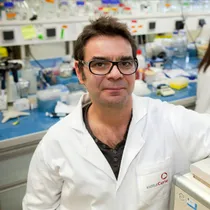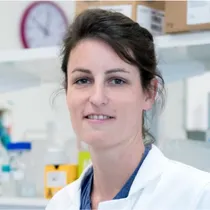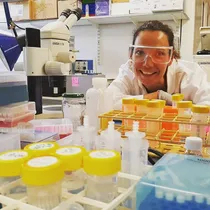- Accueil >
- Publications >
- A high-risk retinoblastoma subtype with stemness features, dedifferentiated cone states and neuronal/ganglion cell gene expression
A high-risk retinoblastoma subtype with stemness features, dedifferentiated cone states and neuronal/ganglion cell gene expression
Auteurs
Jing Liu, Daniela Ottaviani, Meriem Sefta, Céline Desbrousses, Elodie Chapeaublanc, Rosario Aschero, Nanor Sirab, Fabiana Lubieniecki, Gabriela Lamas, Laurie Tonon, Catherine Dehainault, Clément Hua, Paul Fréneaux, Sacha Reichman, Narjesse Karboul, Anne Biton, Liliana Mirabal-Ortega, Magalie Larcher, Céline Brulard, Sandrine Arrufat, André Nicolas, Nabila Elarouci, Tatiana Popova, Fariba Némati, Didier Decaudin, David Gentien, Sylvain Baulande, Odette Mariani, Florent Dufour, Sylvain Guibert, Céline Vallot, Livia Lumbroso-Le Rouic, Alexandre Matet, Laurence Desjardins, Guillem Pascual-Pasto, Mariona Suñol, Jaume Catala-Mora, Genoveva Correa Llano, Jérôme Couturier, Emmanuel Barillot, Paula Schaiquevich, Marion Gauthier-Villars, Dominique Stoppa-Lyonnet, Lisa Golmard, Claude Houdayer, Hervé Brisse, Isabelle Bernard-Pierrot, Eric Letouzé, Alain Viari, Simon Saule, Xavier Sastre-Garau, François Doz, Angel M. Carcaboso, Nathalie Cassoux, Celio Pouponnot, Olivier Goureau, Guillermo Chantada, Aurélien de Reyniès, Isabelle Aerts, François Radvanyi
Résumé
Abstract
Retinoblastoma is the most frequent intraocular malignancy in children, originating from a maturing cone precursor in the developing retina. Little is known on the molecular basis underlying the biological and clinical behavior of this cancer. Here, using multi-omics data, we demonstrate the existence of two retinoblastoma subtypes. Subtype 1, of earlier onset, includes most of the heritable forms. It harbors few genetic alterations other than the initiating
Equipes




Membres

CELIO POUPONNOT
Directeur de recherche CNRS
FRANCOIS RADVANYI
Directeur de recherche
DAVID GENTIEN
Ingénieur de recherche
CELINE VALLOT
Directeur de recherche CNRS






